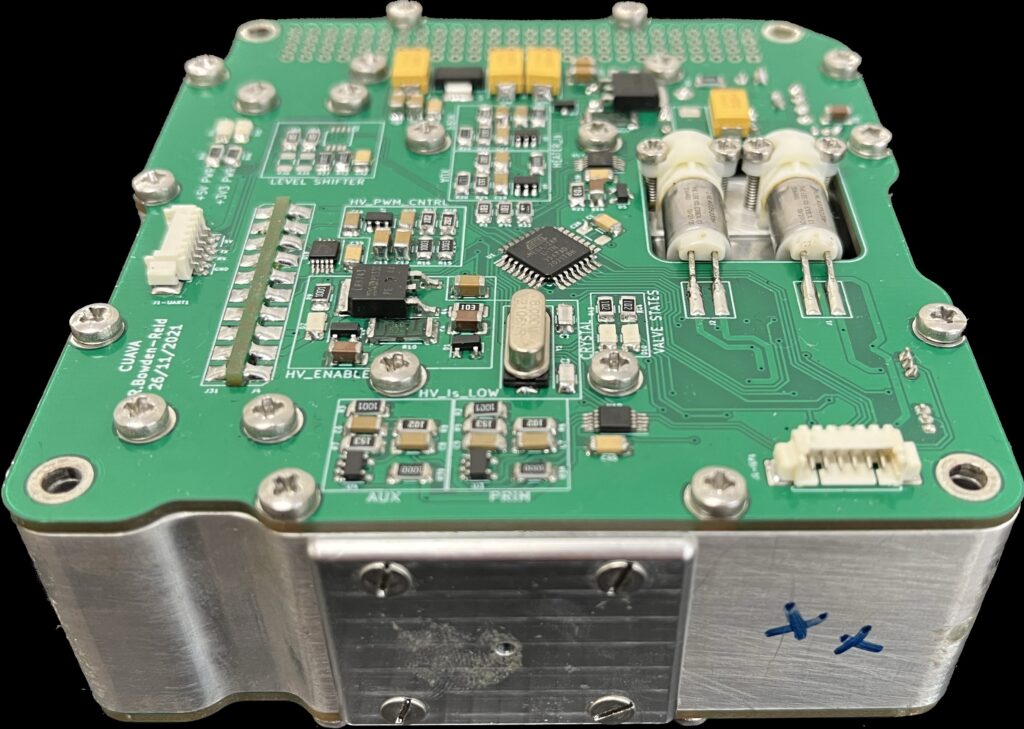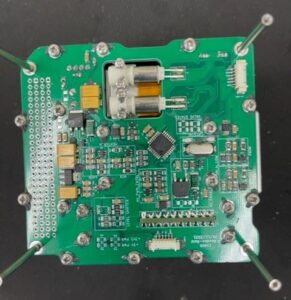The device uses fundamental atomic processes within a discharge plasma to produce a plume of very high-velocity neutral particles (>100km/s), generating thrust without the need for external plume neutralisation systems. The CXT aims to address the shortage of available electric propulsion systems for nano-scale CubeSats. The CXT is simple to manufacture using standard machining techniques and is highly flexible, in principle offering a wide selection of viable fuels and a broad range of operational powers (< 1Watt to 100 Watts).
The CXT is a powerful yet compact unit measuring 100mm x 90mm x 37mm and weighing approximately 350g. Laboratory testing of the thruster system has demonstrated an achievable thrust of 2-5 micronewtons for a peak power consumption of 3 Watts. By carrying out a program of experimental validation in orbit, it is hoped that the CXT will demonstrate itself as a viable thruster system for future CubeSat missions.
We now commence integration into the CUAVA-2 CubeSat, in preparation for launch in early 2024. Congratulations to the CXT team!
Keep up to date with our news and events blog as we spotlight CUAVA-2 payload deliveries.







